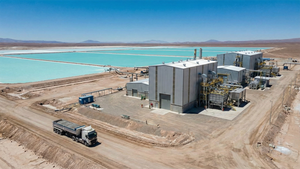NEW YORK, Feb. 05, 2024 (GLOBE NEWSWIRE) -- Verizon, a global leader in driving virtualized and open RAN (Radio Access Network) technologies, has now deployed over 130,000 O-RAN capable radios which includes the massive MIMO radios as part of the previously announced 15,000 O-RAN compliant virtualized cell sites with O-RAN compliant baseband units in its commercial Radio Access Network. O-RAN offers the promise of a wide range of benefits that should introduce new competition and innovation into the RAN ecosystem with the establishment of open and interoperable interfaces between different hardware and software components. The addition of this new O-RAN capable equipment underscores Verizon’s commitment to driving O-RAN standards and technology in the industry.
The transition to Open RAN has the potential to bring many benefits in terms of deployment flexibility, faster innovation in an open environment, and greater service options by increasing the opportunity for new entrants to provide competitive and advanced solutions. More competition, more innovation, and increased supplier diversity will all be net benefits to operators and customers.
“Verizon is fully supportive of O-RAN technology and is focused on commercializing an operationally sound O-RAN architecture,” said Adam Koeppe, SVP of Technology Planning at Verizon. “Our commitment to developing O-RAN standards and to deploying compliant equipment in our active Radio Access Network is helping to drive the industry forward which will result in a variety of tangible benefits for our customers who expect leading-edge technology from Verizon.”
VRAN as a precursor to O-RAN
Verizon has undertaken a massive, multi-year enhancement of its network architecture that consolidates, simplifies, and modernizes its core and access networks. Virtualization and orchestration are key components of this modernization. Along with many vendor partners, Verizon has been leading the charge of the design, development, and deployment of virtualized Radio Access Network technology. This move to a cloud native, container-based, virtualized architecture has led to more flexibility, faster delivery of services, greater scalability, and significant cost efficiency in the network.
Early in 2019 Verizon announced the virtualization of the core network with a cloud-native, containerized architecture. In 2020, it announced that the achievement of fully virtualized baseband functions – the heaviest portion of computing on the Radio Access Network. Verizon has been aggressively deploying that solution throughout the network. With this virtualized baseband unit, Verizon laid the foundation for deployment flexibility, scaling, and rapid integration of services for existing and new use cases.
With the widespread virtualization of network functions across Verizon’s core and RAN, hardware and software functions of the network have been disaggregated and Verizon customers are already enjoying many benefits of that architecture. This creates the foundation for O-RAN. Verizon’s V-RAN efforts run in parallel with and overlap Open RAN efforts, an evolution of the virtual network architecture that will offer up a new set of benefits, technical advancements, and innovation on the radio access networks that serve wireless customers across the nation.
MEDIA CONTACT:
Karen Schulz
864.561.1527
Karen.schulz@verizonwireless.com






